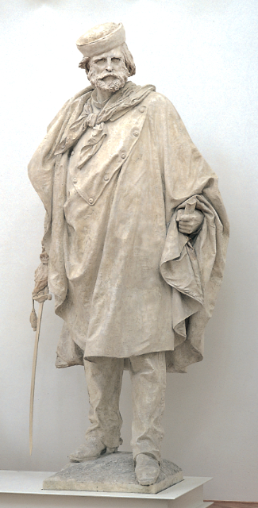Part "Italian Valhalla", part "Pantheon of the Risorgimento"
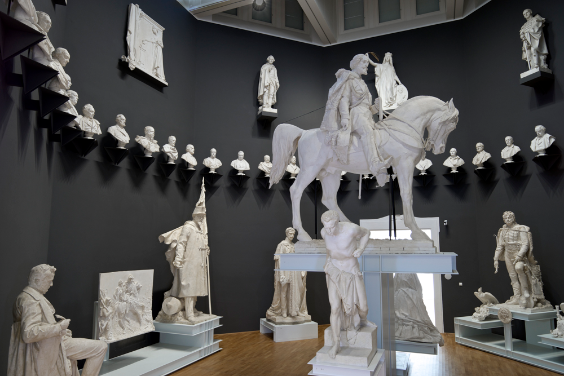
The central area in the villa - the magnificent octagonal space referred to as the "Models Room" in the original plans and used by Vela to exhibit the plaster models of his most important works - is the museum's monumental display area. It is odd that it has become a sort of pantheon of the Italian Risorgimento on Swiss soil, featuring the portraits of the leading figures in the historical period of Italian unification.
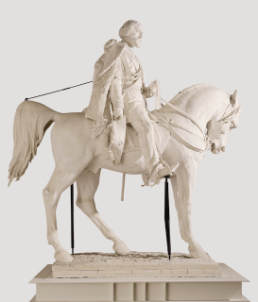
This was Vela's opportunity to tackle the greatest paradigm in monumental sculpture: the equestrian statue. He prepared this colossal model regardless of the opposition and incomprehension on the part of his clients, the executors of the duke's will. In fact the work was never made and the model remains as a magnificent testimony of the enormous effort Vela expended for the benefit of the Brunswick Mausoleum in Geneva.
The horse and its rider, the last duke of the former House of Brunswick (1804-73), were conceived to crown the Neogothic architecture of the mausoleum, standing on a four-sided base at a height of 16 metres.
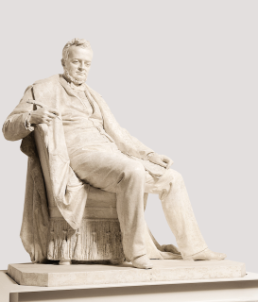
This was the first Italian monument to commemorate the statesmen from Piedmont (1810-61), who got to know Vela during the sculptor's years in Turin but died suddenly just after unification had taken place. The statue, which was executed for the Stock Exchange Building in Genoa, shows the politician seated, wearing everyday clothes, with an expression that appears both shrewd and reflective, and thus very descriptive of the politician's personality. The sculpture is also a persuasive declaration of Cavour's political and economic agenda, since he was a strong supporter of "free exchange" (see the document he is holding) in the Kingdom of Sardinia.
A preliminary model exists of the statue.
Marble, 1863, destroyed in 1942 (ex Genoa, Stock Exchange Building)
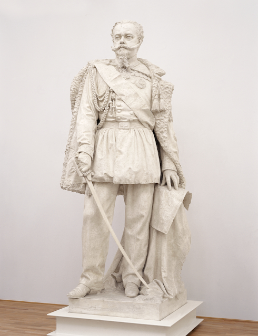
A full-size portrait of the King of Sardinia - and of Italy from 1861 - of colossal proportions, the statue was commissioned from Vincenzo Vela by the Municipal Council of Turin.
The Piedmontese sovereign (1820-78) is shown with a firm grasp on both his sabre and a map of Italy, which might be read as a demonstration of the king's political programme, seeing how the Savoy policy evolved. When considered divested of their enormous size and monumental nature, the human portraits Vela created of his subjects were far more than purely physical semblances, but contained within them allegorical aspects.
Marble, 1865, Turin, Portico of the Palazzo di Città
This Garilbaldi was Vincenzo Vela's last monumental statue; he had reached the end of his career and was to die just two years later. Here, however, he shows no sign of tiredness but has modelled a figure of the hero of the Risorgimento of great power and vigour, the most intense of the hundreds that can be seen in the squares of Italy. Portrayed wearing a picturesque South American poncho, his sword unsheathed, Garibaldi (1807-82) wears a frowning, unsubdued expression that perfectly describes his personal boldness but also his dissatisfaction at the outcome of the Risorgimento.
Bronze, 1889, Como, Piazza della Vittoria
